Calculation of a brick for a house: rules and examples
The key to successful construction is good planning. And building a brick house is no exception. It depends on the correct calculations not only whether you have enough material to build a building, but also how much you can save on the purchase of everything you need, how much transportation will cost, how long it will take to build in general. In this article, we will touch on everything you need to know for calculating bricks for a house.
Factors affecting brick consumption
Every second city dweller dreams of his own house with a small garden, or maybe a pond. This dream is quite feasible, and anyone can build a house for themselves, but the overwhelming majority are afraid not so much of the high cost of the idea as of the complexity of preliminary calculations. In fact, everything is much simpler than it might seem at first glance.
But before you start operating with dry numbers, you need to learn as much as possible about the material with which you will spend many hours alone. Brick consumption depends on several factors: the method of laying, the dimensions of the product itself, the thickness of the seams, the thickness of the walls. Let's consider each of them in order.
There are several types of masonry, each of which is designed for the construction of walls of different thicknesses. For an ordinary wall, a single brick is used, for a thickened one - one and a half, for a powerful supporting structure - a double one. It is necessary to determine which laying method you will use at the design stage of the house. Only when all the walls and partitions are displayed on the drawing, you can proceed to the calculations.
Walls, depending on the type of masonry, can be from 12 cm to 64 cm thick. To ensure heat saving standards, the thickness of walls made of solid clay bricks can be at least 1.9 cm. However, it is extremely difficult and costly to build thick walls, therefore, to reduce the load on the foundation and reduce costs, external walls are mainly made of hollow material. You can also use a full-bodied one, in which you can then make voids and fill them with thermal insulation.
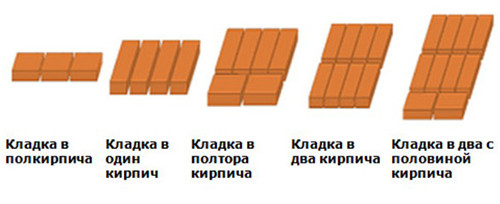
Brick laying methods:
- In the clamp - the bricks are placed on a hard mortar, which completely fills the seams. Each subsequent element is tightly pressed against the masonry (hence the name) with a trowel - a part of the mortar is selected with an edge to the one already laid, and the next brick is moved to its edge. When the brick is almost pressed, the trowel is pulled out, and the mortar that it held remains inside, interlocking the edges. The excess is removed and used for laying the next element.
- Back to back - this method is relevant for laying on a more mobile cement mixture with hollow joints. The solution is raked not with a trowel, but with the edge of the brick being laid, starting from a distance of 8-10 cm from the laid one. So the brick collects the mortar on a vertical edge, which is pressed against the adjacent element. The excess is collected and filled with a vertical seam.
- With pruning - this method combines the techniques of the two options described above. Spread the cement mixture according to the same principle as for laying in the clamp, but lay the bricks back to back.
The next important point is the thickness of the seams between the bricks. On average, it should be 10-12 mm, but not more than 15 mm. Jointing must be carried out every 4-5 rows until the mortar has hardened.
There are two stitching methods:
- In the wasteland - from the outer part of the wall between the elements there are unfilled gaps. This method is mainly used for walls that are planned to be plastered.
- In the undercut - the gaps on the outside of the wall are filled with mortar flush with the front face of the brick. The result is smooth smooth walls. This method is also used for laying chimneys.
An important role is played by high-quality dressing of seams. In order for the load to be distributed evenly and the wall does not crack, it is necessary to prevent the seams in adjacent rows from matching, but to do them with a slight offset. If you are ligating in one row, the bricks laid across (poke) should be alternated with those that lie along (spoon). If the dressing is multi-row, the spoon ones should alternate with the bond ones after 5-6 rows. Reinforcement of the structure with a mesh is also carried out after 5-6 rows of masonry.
Brick selection
People ignorant of construction distinguish only two types of brick - white and red. In fact, everything is much more interesting, and a properly selected brick will help not only make the house stronger and warmer, but also save on transportation, purchase and installation time.
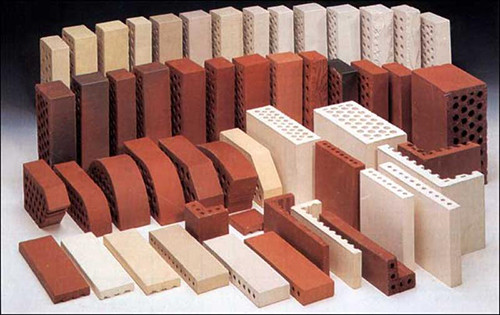
The division of bricks into red and white is, in principle, correct. These materials differ in composition - the red ones are made of clay, and the white ones are made of a sand-lime mixture. Accordingly, the performance characteristics and cost of these products will be different. So, red baked clay bricks are suitable for the construction of almost any structure, from multi-storey buildings and foundations to barbecues, garden paths, etc. It can also be used for facade cladding.
Interesting: Clay bricks can be not only red, but also brown, orange and even pale yellow. It all depends on the quality and properties of the clay used for production. This allows you to embody interesting design ideas for facade cladding, landscape and interior decoration.
Clay bricks also differ depending on the scope and structure. So, an ordinary brick is needed for the construction of walls, and facing - for finishing. According to the structure, hollow and full-bodied products are distinguished. The dimensions can also be different: a single one has sides of 250x120x65 mm, a one and a half width is slightly thicker - 250x120x88 mm, and a double one and even more - 250x120x138 mm.
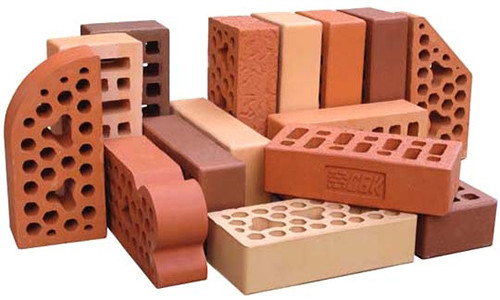
Solid brick has a solid structure without voids. Strong load-bearing walls, columnar structures, vaults, pillars are built from it, it is involved in the arrangement of basement floors, basements and foundations. Hollow, on the contrary, has cavities of various shapes inside, which, after laying, are filled with insulation. This allows you to reduce the load on the foundation, reducing the weight of the wall itself, and make the house warmer.
The calculation of bricks for building a house should be done after choosing the main type of material. And if fired brick is versatile and quite expensive, then silicate (lime) has a lower price, but it cannot be used for the construction of foundations and other load-bearing structures. Despite its low strength, silicate brick has its advantages - it is easy to install, holds heat well, and protects against noise. If you correctly combine the use of clay and lime materials, you can save on the purchase. So, all load-bearing walls can be built from burnt bricks, and silicate can be used to create interior partitions.
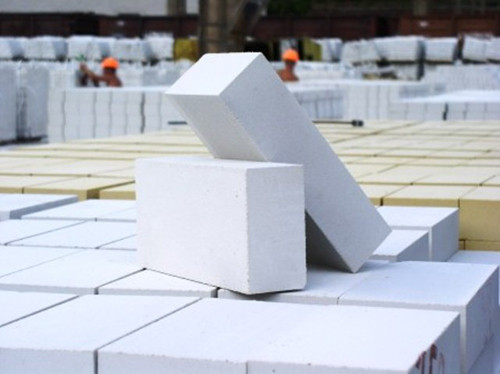
Silicate bricks, like clay ones, can be with or without voids. Hollow ones are distinguished by their lower weight and thermal conductivity, therefore they are actively used for the construction of warm residential buildings. Full-bodied products have a wider color palette - they can be white, yellow, orange, coffee with milk, even black or blue.
brick properties
When choosing a brick, you should pay attention not only to its cost and dimensions, but also to some properties. A special role is played by water absorption, strength and frost resistance. The ability to absorb water is measured as a percentage. The norm for brick is from 6% to 16%. It is clear that for the construction of the external walls of the house it is better to choose a material with minimal water absorption.
Frost resistance directly depends on the water absorption of a brick - the lower it is, the higher the frost resistance. The unit of measurement is a cycle (denoted by the letter F). External walls are recommended to be built from ordinary brick with F25 frost resistance. For finishing, a facing brick with F50 frost resistance is chosen (because it is twice as thin).
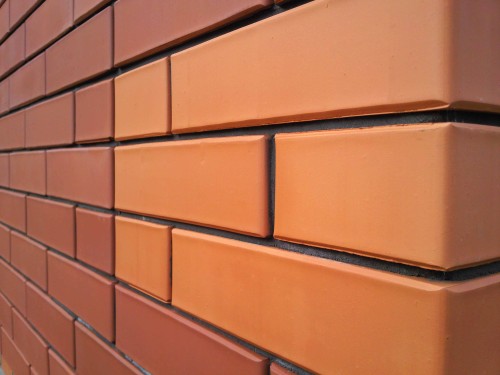
Strength is indicated by the letter M and a number that indicates what load the brick can withstand per 1 cm². The higher the number, the heavier the material. The minimum indicators M75 and M100 are suitable for the construction of a low-rise residential building with a maximum of 3 floors. More durable products marked M150 and M175 are suitable for laying foundations and building basements.
Important: The marking is the same for both hollow and solid bricks. This means that if M100 is written on the products, then they will be able to withstand the same load, regardless of the structure. In addition, the strength of the masonry depends not only on the brand of the product, but also on the mortar used and the thickness of the joints.
What to look for when choosing a brick:
How to define marriage
So that the calculation of bricks for construction does not turn into a waste of time, you must immediately make sure that the material being purchased is of the proper quality. Otherwise, you will then have to calculate how many bricks you need to buy to replace the unusable ones. A complete list of requirements for bricks is set out in GOST 530-2007, but in short, the brand of the product must be at least M100, and frost resistance should be at least F35.
![]()
Signs of illiquid products:
- Chips on the front surface, spots and cracks visible from a distance of 10 m in natural light.
- Non-compliance with standard dimensions (permissible deviations are not more than ± 4 mm in length, ± 3 mm in width and ± 2 mm in thickness).
- Burnt or unburned ceramic brick is also considered a marriage. To determine if a batch is well made, take one brick and split it. The ringing on impact and the rich color of the core indicate good quality. If you heard a dull thud, and inside the brick turned out to be dull, most likely it was not kept in the oven. In this case, the material will strongly absorb water and crack at the first frost.
- Burnt brick, on the contrary, is too dark or even blackened on the outside. But there is one construction trick here - if you cracked a brick, and inside it turned out to be darkened, then you are extremely lucky, because according to experts, such material will be much stronger than ordinary brick, fired under ideal conditions.
- If the ceramic brick is whitish and pockmarked, this means that a large amount of lime inclusions are present in its composition. Unfortunately, it is not possible to completely get rid of them during the production process, since the factories have filters that do not allow only large fractions to pass through. If a large piece of lime material gets into a brick, it will absorb moisture and swell, causing the product to crack. If the depth of chips from lime is less than 6 mm, the bricks go on sale.
- Efflorescence is the most unpleasant phenomenon when working with bricks. This is not quite a marriage, but it can still spoil the appearance of the material. Vysoly (from the word "salt") appear on bricks as a result of the penetration of salts from groundwater, masonry mortar or air. They look like ugly whitish spots and streaks that form after construction is completed, so it is impossible to prevent or predict their appearance. To reduce the risk of efflorescence, you can not work in cloudy weather, do not smear the mortar on the outside of the masonry, and cover unfinished areas at night with plastic wrap so that dew does not reach the brick.
Masonry mortar
So, when you have learned everything you need to calculate the brick and purchase it in full, another point arises - the masonry mortar. After all, the wall consists not only of bricks - 20% of the volume falls on the mortar, on which all the elements are held. Therefore, we will postpone the calculation for a while and talk about what to glue the bricks on.

Almost always, for laying bricks, they make a classic cement-sand mixture diluted with water. To do this, cement is mixed with sifted river sand in a ratio of 1:3 or 1:4 and diluted with water to the desired consistency. Depending on the proportions, the plasticity and strength of the solution differ. To increase plasticity, builders add lime, natural clay or synthetic plasticizers. By the way, plasticizers are especially popular. They can be used for various purposes up to the point that it will be possible to work with such a solution in sub-zero temperatures.
Another important point is the mobility of the solution. For each masonry method, it is necessary to make a mixture with a certain mobility. You can determine this indicator by immersing a reference cone in the solution and looking at its draft. So, hollow and perforated bricks can be placed on a mortar with a cone draft of 7-8 cm. With high mobility, the mixture will quickly fill all the holes in the blocks, which will negatively affect the thermal insulation characteristics for which they are valued. A mortar for a solid brick should be more liquid and give a draft of a cone of 9-14 cm. If it is too thick, it will crack over time.
The quality of the solution is determined not only by plasticity, but also by uniformity. To achieve the optimal consistency, you must purchase sifted fine sand or sift it yourself. If the mixture is prepared correctly, a thin layer is enough to securely hold the brick over the entire adjacent surface.
Brick transportation
As we promised above, a few words about the specifics of material transportation. The purchase price includes the delivery of bricks to the place of work, so this factor must be taken into account when calculating.
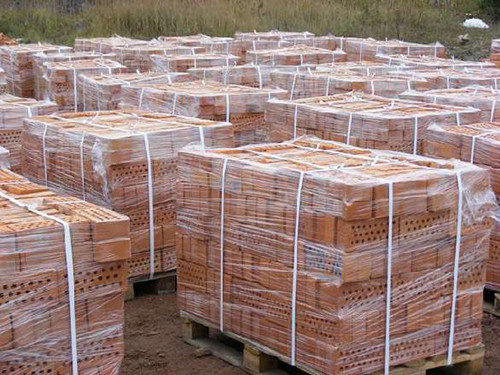
Brick refers to rather expensive materials, especially when it comes to a full-bodied ceramic product. After calculating the required amount, add 10% to it in case of a battle or repair in the future. To minimize the number of broken products, it is necessary to transport bricks on pallets, in original packaging or containers.
If transport takes place on pallets, the bricks should be placed with a special herringbone tie, i.e. inclined towards the center at two edges at an angle of 45°. So they can be transported in ordinary cars that are not equipped with additional bumpers. A pallet with dimensions of 52x185 cm can accommodate 200 ceramic bricks, a pallet of 50x185 cm - up to 450 silicate bricks.
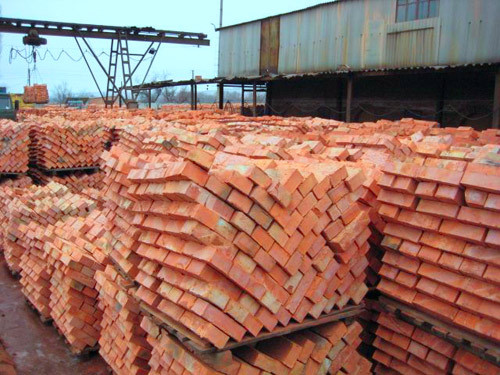
Brick calculation
So, we told you everything you need to know for the correct calculation of a brick for a house. The last caveat - always remember that the seams account for about 20% of the total volume of masonry.
Let's give an example of calculating a brick for a house 10x10 m.
Working process:
- The first step is to find out the total length of the outer walls. Since in our case the house is completely ordinary, it has only 4 walls of 10 m each, for a total of 40 m.
- The height of the ceilings will be 3.1 m, therefore the height of the two floors is 6.2 m. Based on the available data, you can find the total area of \u200b\u200bthe external walls:
S \u003d 40 * 6.2 \u003d 248 m². - From the total area, you should subtract the area of \u200b\u200bthe areas allocated for windows and doors, because they will not be filled with bricks. For our house, this is 38 m², so 248-38=210 m².
- The walls will be laid in 2.5 masonry, so their thickness will be 68 cm. First, a double masonry will be made of a single ordinary brick, and 1 row will be laid with a single face brick. The most common construction method is single brick laying followed by thermal insulation and cladding. The required amount of material can be determined from the table below. The calculation of facing bricks for a house is as follows: 21 * 210 \u003d 10,710 pcs.
- We find the required number of ordinary single bricks for walls: 204*210=42,840 pcs.
Now you can compare this data with the cost of materials and find out how much money will be spent on the purchase and how much solution will be needed. Please note that these calculations do not include interior partitions. Proper planning of expenses is the key to economical construction and prevents unforeseen expenses. For greater convenience, you can use the brick calculator online.
As you can see, it is not so difficult to calculate the required amount of building materials, the main thing is to be able to understand the types of bricks so as not to miscalculate the quality and durability of the future building. The devil, as you know, is hidden in the details, so before such a responsible task as the construction of a residential building, it is better to understand the theory properly.
 Masonry mortars for brick kilns
Masonry mortars for brick kilns Why do the windows fog up in the apartment
Why do the windows fog up in the apartment Construction and schemes of brick ovens
Construction and schemes of brick ovens How to lay paving slabs: tips and tricks
How to lay paving slabs: tips and tricks How to drill bathroom tiles
How to drill bathroom tiles Monolithic slab on coarse soil
Monolithic slab on coarse soil Which electric heater is economical
Which electric heater is economical